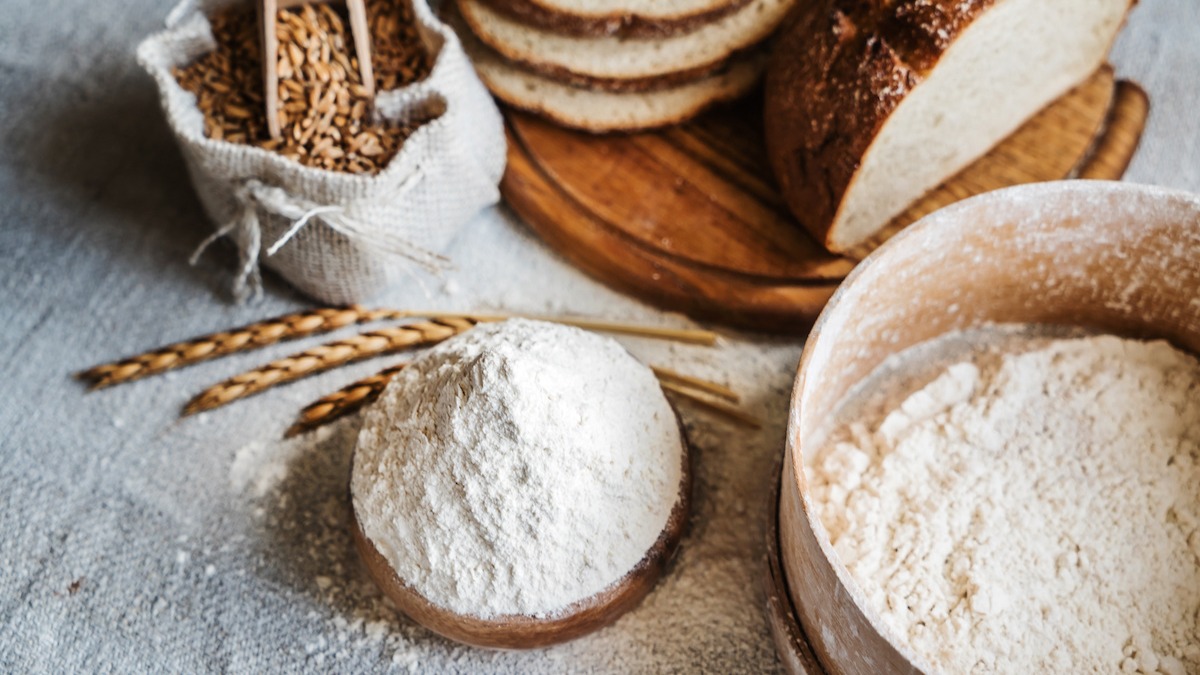
The versatility and mild flavor of bread flour make it a go-to ingredient in many sorts of baked goods. Pastry made with bread flour has excellent texture and may be used to create a wide range of other pastries.
Even though bread flour is a staple ingredient for commercial and home bakeries, many concerns remain about its composition, storage, and nutritional value. For instance, many bakers wonder, “What is the difference between bread flour and plain flour?” or “Is bread flour healthy?” concerning bread flour. As such, we’ve compiled a list of the seven most often asked questions regarding bread flour and provided detailed responses. Enjoy!
Table of Contents
1. Should I Use Bread Flour Or Ordinary Flour If I Want To Make Bread?
The protein content is the primary distinction between bread flour and all-purpose flour. There is more protein in white and whole wheat bread flour than in regular flour. The specific protein content of bread flour is 11%-13%—protein-rich bread flour yields much gluten. The elastic properties of bread dough and the distinctive crunch of baked bread are both attributes of gluten. Loaves of bread with lots of air pockets result from a network of gluten strands created during the kneading process. Use bread flour instead of regular flour if you want a chewier end product. When making bread or rolls, use bread flour.
2. What Makes Cake Flour Distinct From Bread Flour?
Cakes require cake flour, which is designed for that purpose alone. Cake flour, on the other hand, is the polar opposite of bread flour in terms of its protein level. Cake, in contrast to bread, which is meant to be chewy and contains a lot of gluten, should be light and tender. Cake flour has a low protein content, often around 9%, because minimum gluten formation is required while baking cakes.
3. What Characteristics Distinguish Bread Flour From Pastry Flour?
Pastry flour, which has a protein concentration even lower than cake flour (about 8%), is used primarily in the preparation of pie crusts, biscuits, and scones, as well as any other baked dish for which a tender, crumbly or flaky texture is desired.
4. Can You Put On Weight From Eating Bread?
Bread flour has a varied and healthy nutritional composition but is somewhat heavy in carbohydrates. Carbohydrates, once inside the body, are broken down into glucose, which then causes blood sugar levels to rise. Due to this, our final weight may increase.

It’s best to utilize bread flour or limit your bread consumption.
Mixing bread flour with spelled flour in baking can help reduce the rise in blood sugar after eating bread flour. The dietary fiber content of whole spelled grains is very high. The consumption of dietary fiber can mitigate the after-meal sugar rush by slowing digestion. Because of its high fiber content, spelled is an excellent choice for promoting healthy digestion.
5. How Many Slices Of Bread Do You Recommend?
Bread flour bread loaves are delicious, but they should be eaten in moderation. The standard recommendation is one to two medium slices per person. In addition, we need to be careful about what we spread on the bread. To avoid overeating, we should examine the calories and sugar content of the condiment we plan to use on our bread, like jam or butter, before spreading it on.
6. Can I Have Bread Every Day Without Any Ill Effects?
To be clear, the answer is no. Bread and other grain products provide us with the carbs, B-group vitamins, minerals, and dietary fiber that we need to have a productive day. The B vitamins are essential for proper metabolism and nerve function. Iron and magnesium, two minerals, have been shown to boost the immune system and steady blood oxygen levels. The fiber in the diet is crucial for proper intestinal function. To get the most out of the nutrients in bread and other grains, eat a wide variety of these meals.
In conclusion, there are many unanswered questions about bread flour; the above are some of the answers to the commonly asked questions about bread flour.






